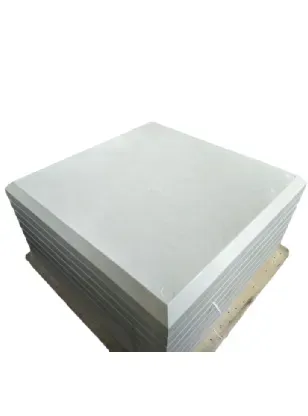loading...
- No. 9, Xingyuan South Street, Dongwaihuan Road, Zaoqiang County, Hengshui, Hebei, China
- admin@zjcomposites.com
- +86 15097380338
- Welcome to visit our website!
Advancements in Glass Fiber Reinforced Polymer Rebar for Enhanced Structural Applications
Glass Fiber Reinforced Polymer Rebar A Innovative Solution for Construction
Glass Fiber Reinforced Polymer (GFRP) rebar has emerged as a revolutionary material in the construction industry, offering a viable alternative to traditional steel reinforcement bars
. Its unique properties and advantages make it a compelling choice for various applications, ranging from residential buildings to complex infrastructure projects.GFRP rebar consists of a polymer matrix reinforced with glass fibers, providing a lightweight yet strong and durable product. One of the most significant advantages of GFRP rebar is its high corrosion resistance. Unlike steel, which is prone to rusting when exposed to moisture, GFRP maintains its integrity in harsh environmental conditions. This characteristic is particularly beneficial in regions with high humidity, saline environments, or where de-icing salts are frequently used. The longevity of GFRP rebar leads to reduced maintenance costs and extended service life of structures, making it a cost-effective investment over time.
Another major benefit of GFRP rebar is its significantly lower weight compared to steel. This attribute simplifies handling and installation, reducing labor costs and allowing for easier transportation on-site. The lightweight nature of GFRP also leads to less stress on the supporting structures during construction, making it an ideal choice for overhead applications or areas with load restrictions.
In addition to its practical advantages, GFRP rebar also offers superior performance in terms of tensile strength. The glass fibers provide high tensile properties, allowing for efficient load distribution in concrete structures. This performance is crucial in ensuring the structural integrity of buildings and infrastructures, particularly in seismic zones or areas subject to dynamic loads. The inert nature of GFRP also means that it does not change over time or degrade under UV exposure, maintaining its mechanical properties throughout its lifespan.
glass fiber reinforced polymer rebar

Moreover, GFRP rebar is non-magnetic, which is particularly beneficial for applications in sensitive environments such as MRI facilities or near sensitive electronic equipment. Its non-conductive properties can also be advantageous in reducing electrical interference, making it a preferred choice for specific high-tech applications.
Despite its impressive advantages, the adoption of GFRP rebar has not been without challenges. Initially, the higher material cost compared to steel has deterred some project managers from considering it as a primary option. However, as the technology behind GFRP matures and production scales up, prices are expected to come down, making it more accessible. Moreover, the long-term cost savings through reduced maintenance and increased lifespan can offset the initial investment.
The versatility of GFRP rebar allows it to be utilized in a wide range of applications beyond just traditional concrete reinforcement. It is particularly beneficial for use in marine structures, chemical plants, bridges, tunnels, and other infrastructure projects where durability and corrosion resistance are critical.
In conclusion, Glass Fiber Reinforced Polymer rebar is an innovative solution poised to transform the construction industry. Its unique properties, such as corrosion resistance, lightweight nature, high tensile strength, and versatility, make it an attractive option for engineers and architects looking to enhance the longevity and safety of their structures. As awareness and understanding of GFRP rebar continue to grow, it is likely that this advanced material will play an increasingly important role in meeting the challenges of modern construction. Investing in GFRP technology not only supports sustainable building practices but also paves the way for a more resilient and durable built environment.
-
Premium FRP Handrail for All ApplicationsNewsAug.29,2025
-
Low Maintenance FRP Mini Mesh Grating ProductsNewsAug.29,2025
-
Innovative FRP Square Tubes for Modern Industrial SolutionsNewsAug.29,2025
-
FRP Water Storage Tanks Wholesale Solutions for Bulk BuyersNewsAug.29,2025
-
FRP Molded Grating Solutions for Diverse Industrial ApplicationsNewsAug.29,2025
-
Construction Advancements Through FRP Pultruded ProfilesNewsAug.29,2025
-
Why Choose FRP Railings, Guardrails, and Handrail Systems?NewsAug.29,2025
